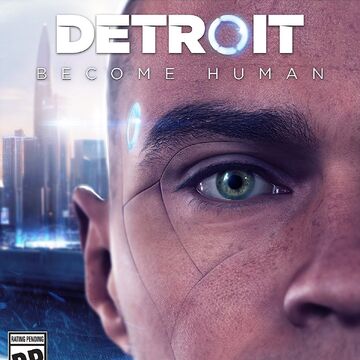Story based video games, such as Heavy Rain, Beyond: Two Souls, L. A. Noir, and Detroit: Become Human, which will be the focus of this evaluation, rely on the player to pick options to situations and complete tasks. The choices that are made affect the final result of the game meaning that different players will have different outcomes, some may progress further into the story whereas others may have exhausted all of their options early on.
Detroit: Become Human is a third person view game where there are multiple playable characters that the player can control and progress their story. It is based around three characters who, at the beginning have different storylines but eventually converge depending on the choices that are made by the player. The game is rooted in a strong moral concept of right and wrong. The choices that the player makes with any of the three characters has a great impact on the entirety of the universe that they are playing in.
Playing through the game, there is a heavy investment in the story of all of the characters and attachments build. The graphics are of a high quality so the player is able to see small details that would otherwise be missed. The ability to see facial expressions also adds to the attachment that the player builds with the characters. It is an immersive environment, meaning that hours can go by without the player noticing. As the story evolves, more difficult decisions have to be made, playing into the moral code that is in place, some of which result in the characters dying.
This game fits well within the senior level philosophy classes around the discussion of morals and the outcomes of decisions as well as in the English curriculum around authorial intent and the differing views around the same text. It is key to consider that when students lack the attention span, critical thinking skills, and the motivation that is important to read an entire text, they will struggle to pick up the deeper meaning and significance of them (Grey, 2012, p. 24). By having a video game that is as immersive and engaging as Detroit: Become Human as an alternate literature for students, they will feel that they are getting more out of their learning experience as they have a sense of control over what is happening in the story. Creating and developing a discourse among the students around authorship and authorial intent through the use of a video game helps them to broaden their understanding and assumptions about literature and its creation (Berger & McDougall, 2013, p. 142). Along with the playing of the video game, students can also watch videos of other people playing trough and have discussions based around that. This will allow for comparison between their own experience and that of others. The discourse element is quite important to consider as it will allow the students to link back to other texts that they are looking at and try and find parallels.
The video game is available on Play Station 4 and on Microsoft computers through a program called Steam. This video game is more suited to upper high school students due to the nature of some of the scenarios and the decisions that need to be made. There may be some limitations around cost and the accessibility for the students. Some parents may have objections around the themes in the video game, however, that is a common hurdle with texts in general studied in schools or used to supplement the course material.
By having a video game that can differ from one player’s experience to another, it allows the students to discuss their thoughts and the process of decision making, opening the lines of communication around the idea of authorial intent and the concept of right and wrong in a moral setting. It allows the students and the teachers the opportunity to explore concepts and ideas in a way that is familiar to students and to break out of the constraints of the traditional texts that are most commonly used.

References:
Berger, R., & McDougall, J. (2013). Reading videogames as (authorless) literature. Literacy, 47(3), 142-149.
Gray, l. (2012). Added Interest, Added Value. In S. Emmons, E. Dail-Driver & J. Ford (Eds.), Fantasy media in the classroom: Essays on teaching with film, television, literature, graphic novels and video games (pp. 24-32). McFarland & Company.
